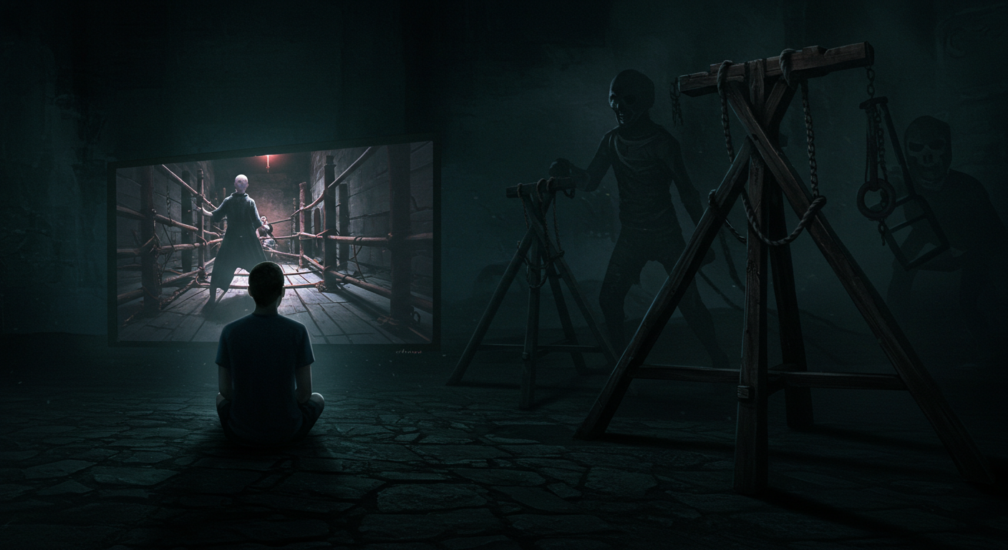Torture scenes in movies often walk a fine line between dramatic effect and historical authenticity. Whether it’s a shadowy dungeon in a medieval castle or a brutal interrogation room in a war film, these moments captivate audiences. But how accurate is movie torture really? Let’s dive deep into the world of movie torture myths, separating fact from fiction, and uncover what history actually tells us.
The Allure of Torture on Screen
Why are torture scenes in movies so common? The answer lies in storytelling. Torture serves as a dramatic device, heightening tension, eliciting empathy, and showcasing the stakes characters face. But while these depictions serve the plot, they often stretch or distort the truth.
Take, for instance, the use of elaborate and grotesque devices in films. While visually stunning, many are exaggerated torture in movies, sometimes even based on myths rather than actual historical use. This brings us to an important question — were such tools ever truly used?
A Glimpse Into Real History
Real torture methods in history were undoubtedly brutal. From the Iron Maiden (which, interestingly, has no confirmed use in medieval times) to the rack, the goal was often to extract confessions or exact punishment. These methods were tied to systems of justice that, by modern standards, seem unfathomably cruel.
Historical torture methods varied greatly across cultures and periods. The Middle Ages, for instance, saw an evolution of torture as both a tool for interrogation and public spectacle. However, not all the methods shown in film were historically employed. Many were invented or dramatized long after the medieval period ended.
Medieval Torture in Movies: Fiction vs Fact
Movies often depict medieval torture in movies as relentless and excessively violent. While it’s true that violence and suffering were part of medieval life, Hollywood has a tendency to amplify the horror. Devices like the Pear of Anguish or the Judas Cradle, commonly featured in horror and thriller genres, lack substantial historical evidence of widespread use.
Moreover, many inaccurate torture scenes in films ignore the legal processes and religious contexts surrounding torture in the past. For example, in the inquisitorial systems, torture could only be applied under specific conditions and was often limited in duration.
Psychological Torture: More Real Than You Think
While physical torture devices draw the most attention, interrogation tactics and psychological manipulation were, and still are, effective and terrifying. Films tend to underplay the mental toll, focusing instead on gory visuals. However, fear, isolation, and prolonged stress are among the most devastating forms of torment, both historically and in modern settings.
The brutality of psychological torture is often more haunting than any physical device, though harder to capture on screen. Its invisibility makes it less cinematic, but more insidious.
Famous Films and Their Flaws
Some notable films that portray torture include Braveheart, The Passion of the Christ, Hostel, and Saw. While they vary in tone and genre, all use torture as a central visual or emotional driver. But again, we see a pattern of movie torture myths, where devices or scenarios are used more for shock value than accuracy.
In Braveheart, William Wallace’s execution includes scenes of disembowelment, a practice associated with execution but dramatized to an extreme. In The Passion of the Christ, the flogging scenes are prolonged and graphically violent, likely to evoke emotional impact rather than present a balanced historical record.
Why Accuracy Matters
While movies aren’t documentaries, the way torture is depicted affects public perception. It can shape how we view the past, legal systems, and even modern-day practices. When filmmakers choose shock over truth, they risk perpetuating misinformation.
The Medieval Torture Museum addresses this gap by offering a grounded look into the legend and reality of torture throughout history. Visitors can explore actual devices and understand their contexts – a far cry from the stylized portrayals on screen.
If you’re looking for a unique place to visit in Chicago, this museum offers an immersive journey into the darkest corners of the human past.
A Real-World Perspective on a Cinematic Obsession
Rather than relying solely on film, consider stepping into history itself. The Medieval Torture Museum in LA and the Medieval Torture Museum in St Augustine provide a sensory, educational experience that connects stories, objects, and the emotions they evoke.
Each exhibit invites you to question what you thought you knew. The dungeon scenes you’ve seen in cinema may feel different when you’re inches away from real iron, wood, and leather once used for unimaginable pain.
Final Thoughts: Between Horror and History
Torture in film is a powerful tool – for emotion, for narrative, and for visual impact. But to truly understand its place in human history, we must look beyond the screen. By comparing how accurate is movie torture to actual history, we reveal not just cinematic shortcuts, but the enduring human fascination with control, retribution, and horror.
Dive deeper into this topic and more in our blog, where we continue to explore the line between fear and fact.
If you’re ready to confront both the myths and realities of medieval punishment, there’s no better way than seeing it with your own eyes. Let history speak — not through special effects, but through iron and truth.






